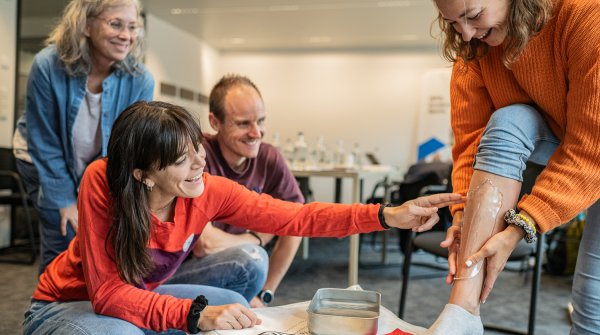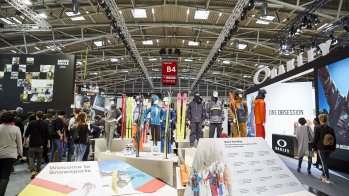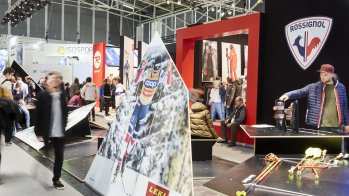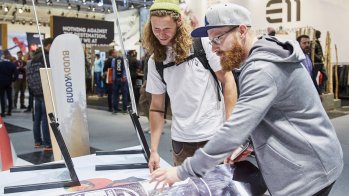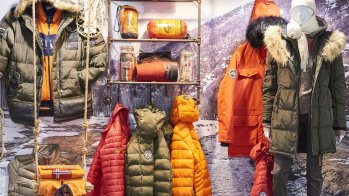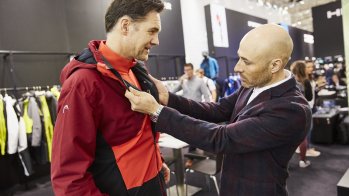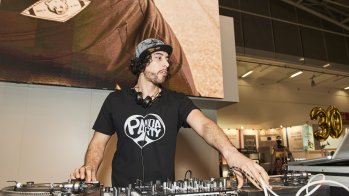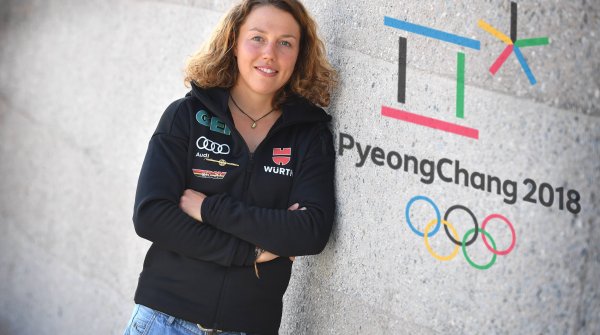Jeremy Jones is one of the pioneers of big mountain freeriding. He was named National Geographic Adventurer of the Year in 2013 and received the White House Champion of Change Award from Barack Obama.
The former US president had honored the Protect Our Winters Initiative founded by Jones in 2007. POW also works with partners like Brands for Good .
He founded Jones Snowboards in 2009, specializing in freeride snowboards and splitboards. Jones aims to make his company into a leading brand in the outdoor industry in the fight against climate change.
ISPO.com: Snowboarding has long been a big trend. For some time now, snowboarders have only been a small part of the winter sports community – but ISPO Munich 2018 showed an exciting development. What’s changed?
Jeremy Jones: I really liked the get-together of the winter sports community at ISPO Munich. You meet so many people from so many different countries in one place there. It’s something really special. But in the end, that only happens once a year.
When I think about snowboarding in general, its significance has ultimately diminished from year to year. But now I think it’s growing again.
Has everything gotten a bit more real in snowboarding again? Has snowboarding gone back to its roots?
There was this period where snowboard companies were listed companies. The investors had this idea that snowboarding would get really big and that they could make some real money as investors. That’s settled back down again. It’s gone back to being a more personal sport. And some of the big companies – which were only around for financial reasons – understood that there are easier ways to earn money than with snowboarding.
It’s nice to see these companies gone. And it’s nice seeing that many of the companies that have stuck around are bringing a true passion for the sport.
What does the future hold for snowboarding?
I’m seeing a significant increase in the number of children reaching for the snowboard again – and young children especially. For the first time in ten years, I’m seeing snowboarding start to grow again. I have children myself, and I can say: It’s getting cooler among ten- to twelve-year-olds again.
Skiing has gotten considerably more important in recent years. But now I’m seeing that, among the kids who’ve done both, most of them tend towards snowboarding.
If you had just one wish on the subject of snowboarding for the future: What would it look like?
I like our fun parks, I really do. But they’re a bit like training parks for producing professional snowboarders. That’s fine. I think that’s very important. But I don’t believe that every snowboarding park in the world has to be that way. This often seems more like a personal training facility for the Olympics.
What I wish for are fun parks that are flowy, inviting, and creative. And then I also have one much larger wish.
What would that be?
The snowboard and ski industry absolutely need to work closely together to combat climate change. The essential story about the future of skiing and snowboarding is that, very soon, there will be far fewer skiing regions and much less snow. Everything is going to happen in the high mountains.
However: We decide how much is going to change, and how quickly. That’s why I find it surprising that the industry is afraid of talking about it and not daring to do anything.
And what sets Jones Snowboards apart from other brands? What makes you better?
Are environmentally friendly snowboards possible? I don’t view this question in terms of a competition – but rather as a challenge for everyone. I think we all need to do something. And for us, it’s about every facet from the snowboard production process to sales.
We’re in the middle of a highly detailed audit, a test of the ecological footprint of our product. We’ve always tried to build better snowboards, and we also strive to produce snowboards as sustainably as possible. And then we’re part of the “1% for the Planet” campaign.
Snowsports at ISPO Munich 2018 in pictures
What does that mean for Jones Snowboards?
One percent of sales will go to organizations that are committed to protecting and preserving the environment. And through my commitment to “POW – Protect Our Winters” (editor’s note: the organization aims to mobilize the outdoor scene in the fight against climate change), I see that there are a lot of great environmental organizations out there.
But the most important thing for all of these organizations fighting for the planet is money. We need more people, and by that I also mean industry companies that get paid to wake up every day and combat climate change.
Our industry needs to get more creative here. I’m lucky that I founded this company nearly ten years ago and things are going very well. And that’s regardless of whether I donate one percent to “1% for the Planet” or not. So I don’t understand why established companies can’t do the same.
What more could companies be doing?
For example, we threw a party at ISPO MUNICH where we auctioned off a snowboard with artwork. We collected a five-figure sum that way.
My appeal to everyone: It’s not that difficult. Everyone can reflect on how they can raise money for the planet!
You mentioned POW. Your US-based initiative has now grown into a worldwide movement with several groups of countries. Did you think it could have such a big effect?
In a way, yes - in a sense, no. I mean, less than one percent of the companies in the winter sports industry are working together with “Protect Our Winters.” Less than one percent of skiers and snowboarders are members of Protect Our Winters. Anybody could become a member for one dollar. It’s shocking that so many people aren’t joining in.
On the other hand, I’m very proud of it. We have ten people working for Protect Our Winters in the US. Those are the brightest minds in this industry. And they’re people who want to change the world. I’ve learned that truly clever people want to change the world.
- ISPO awards
- Mountain sports
- Bike
- Design
- Retail
- Fitness
- Health
- ISPO Job Market
- ISPO Munich
- ISPO Shanghai
- Running
- Brands
- Sustainability
- Olympia
- OutDoor
- Promotion
- Sports Business
- ISPO Textrends
- Triathlon
- Water sports
- Winter sports
- eSports
- SportsTech
- OutDoor by ISPO
- Heroes
- Transformation
- Sport Fashion
- Urban Culture
- Challenges of a CEO
- Trade fairs
- Sports
- Find the Balance
- Product reviews
- Newsletter Exclusive Area
- Magazine

